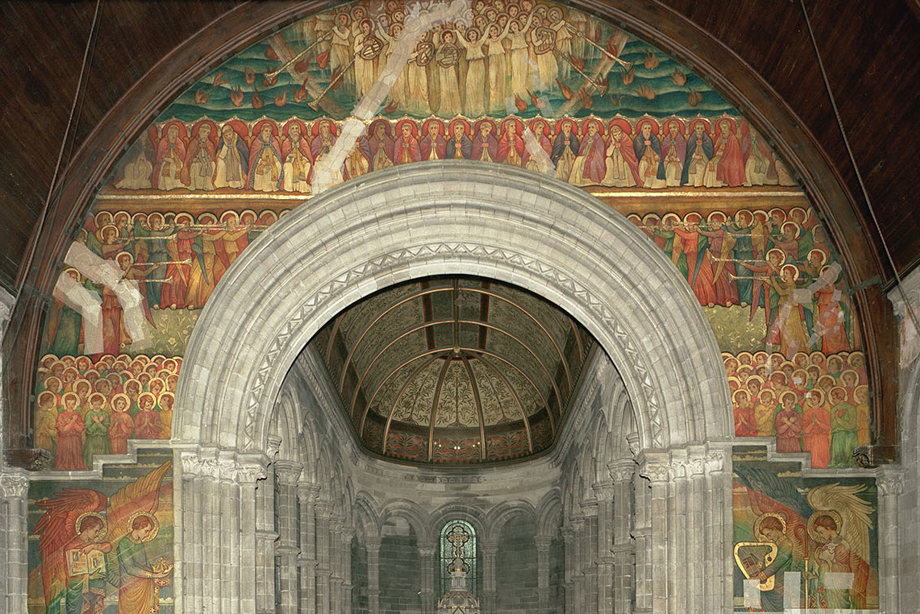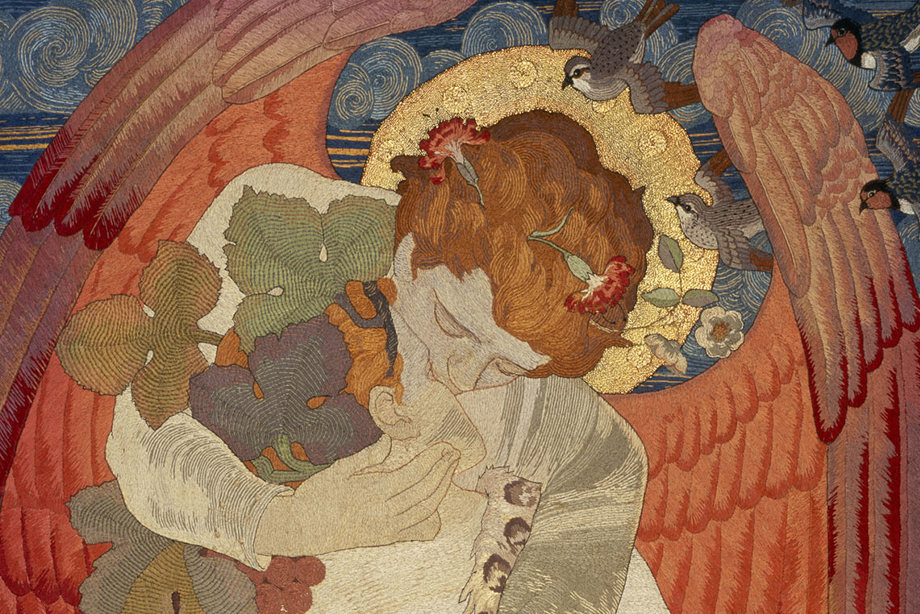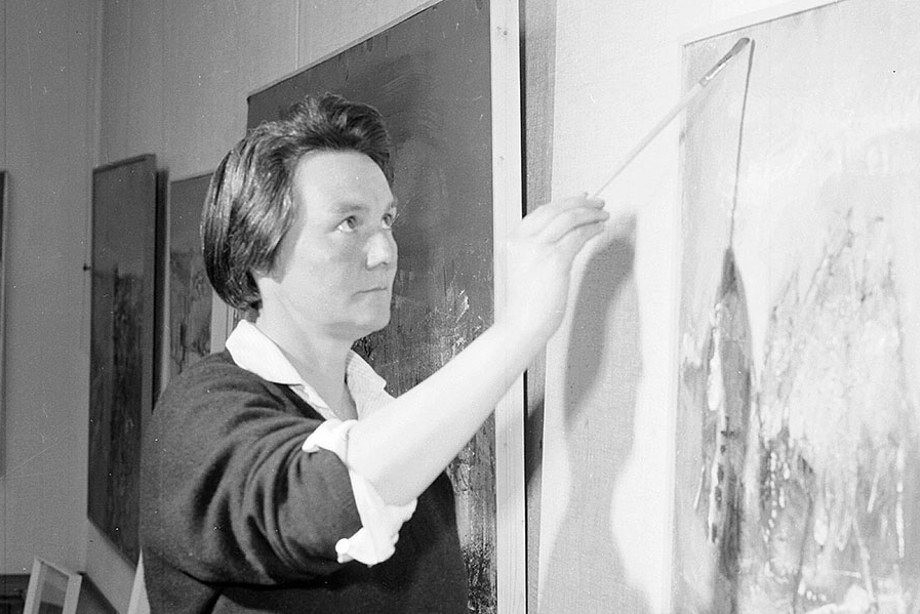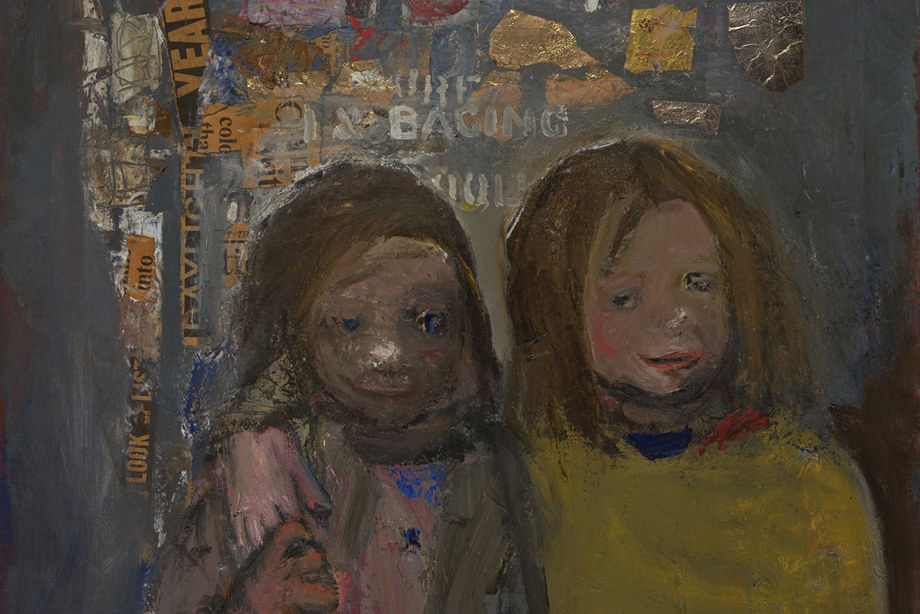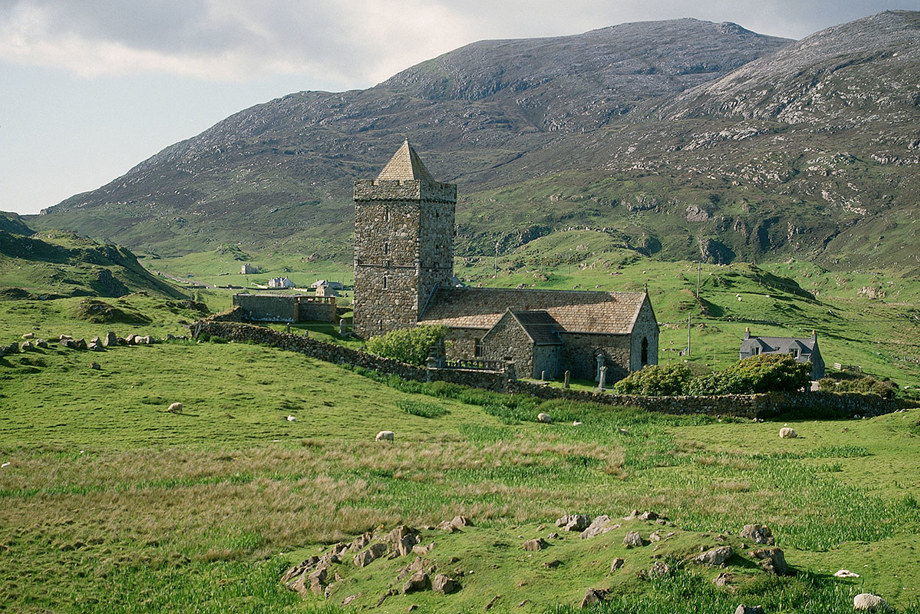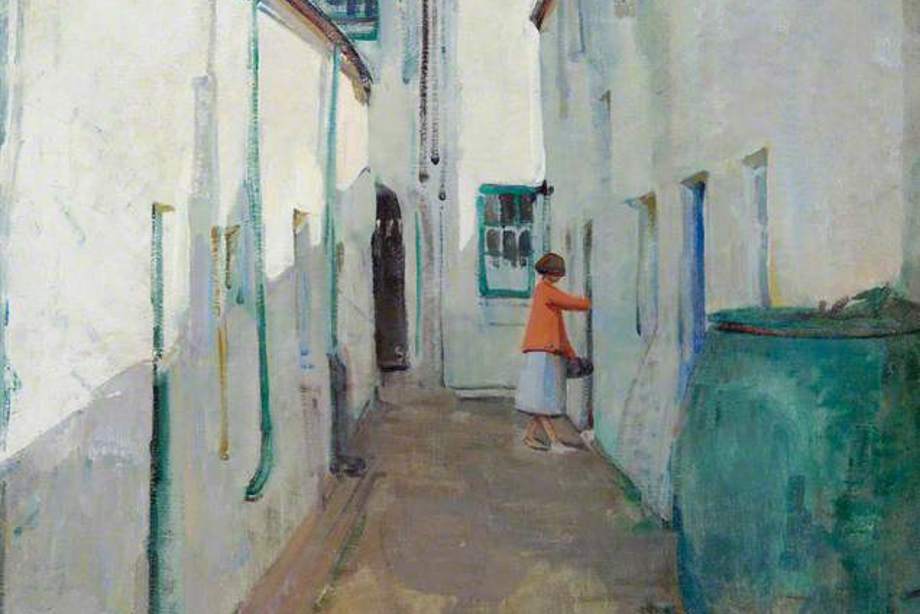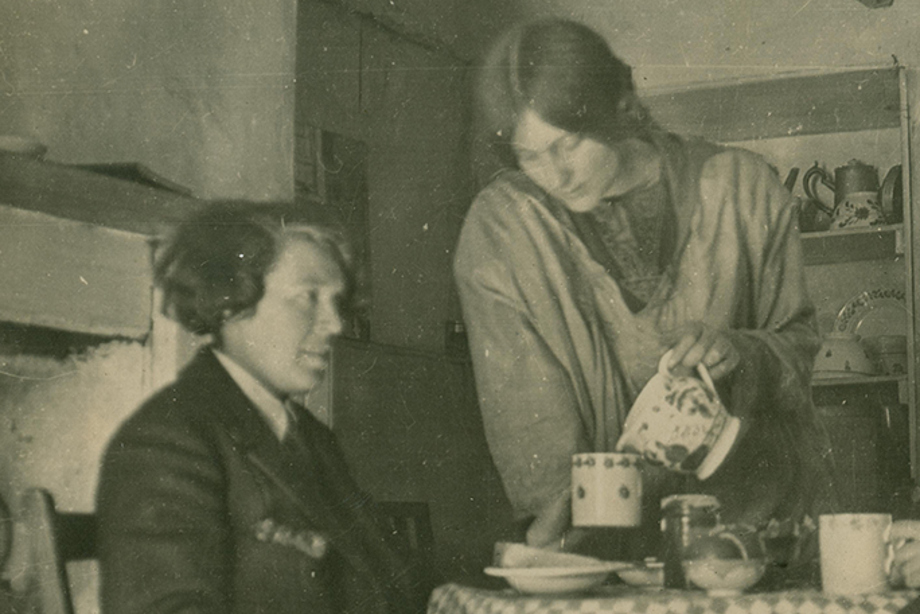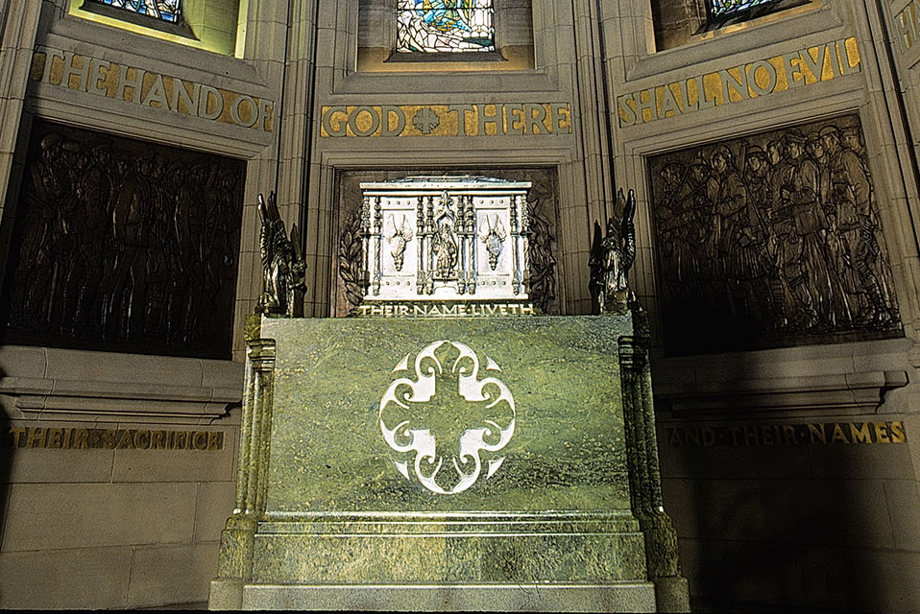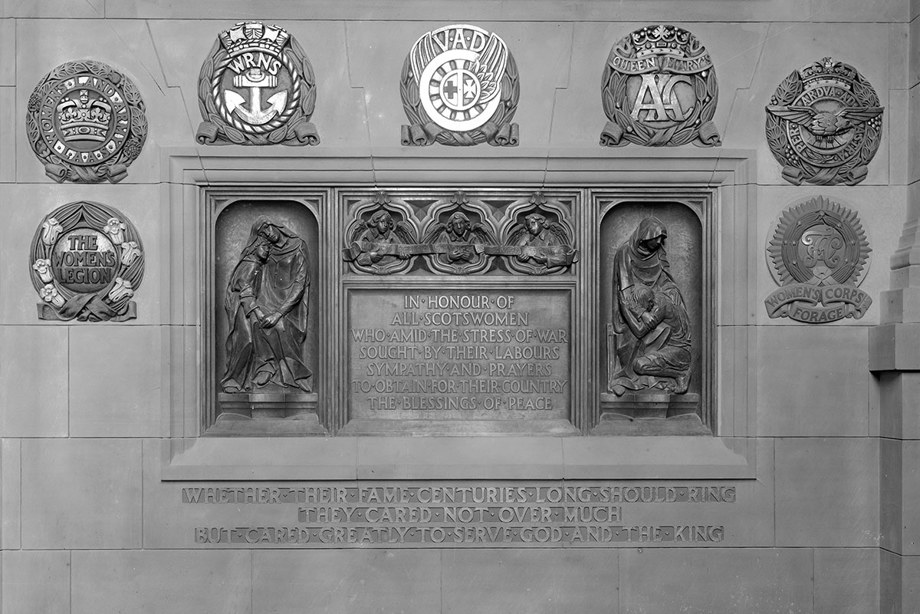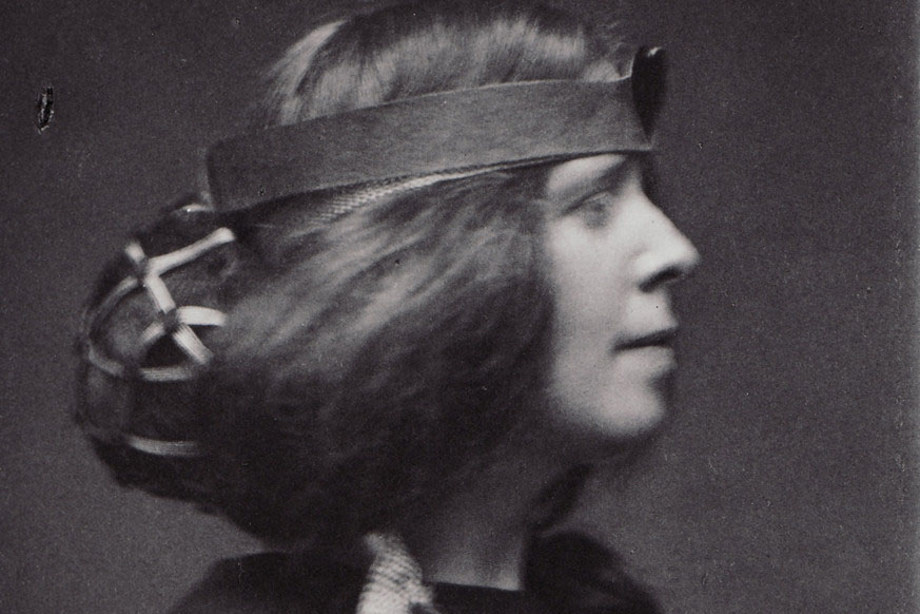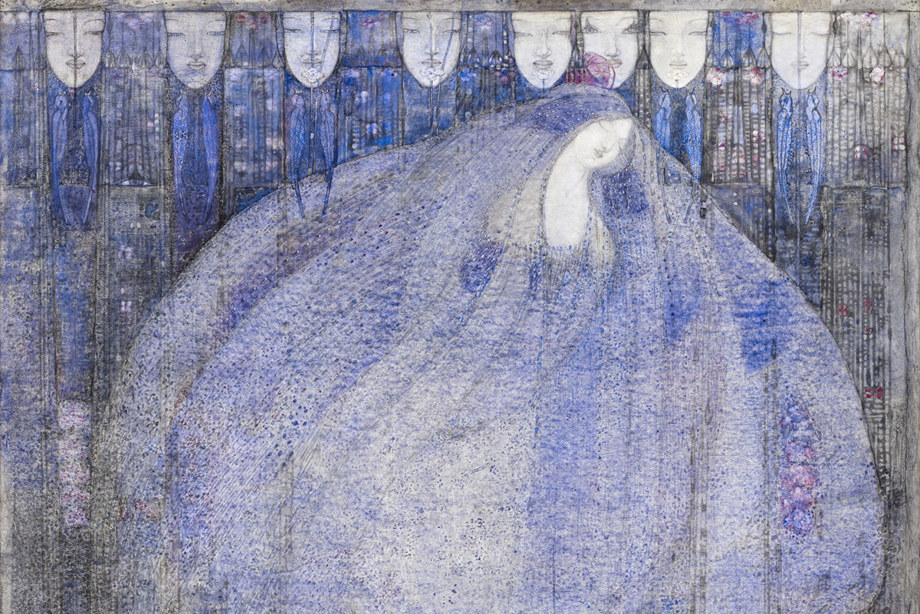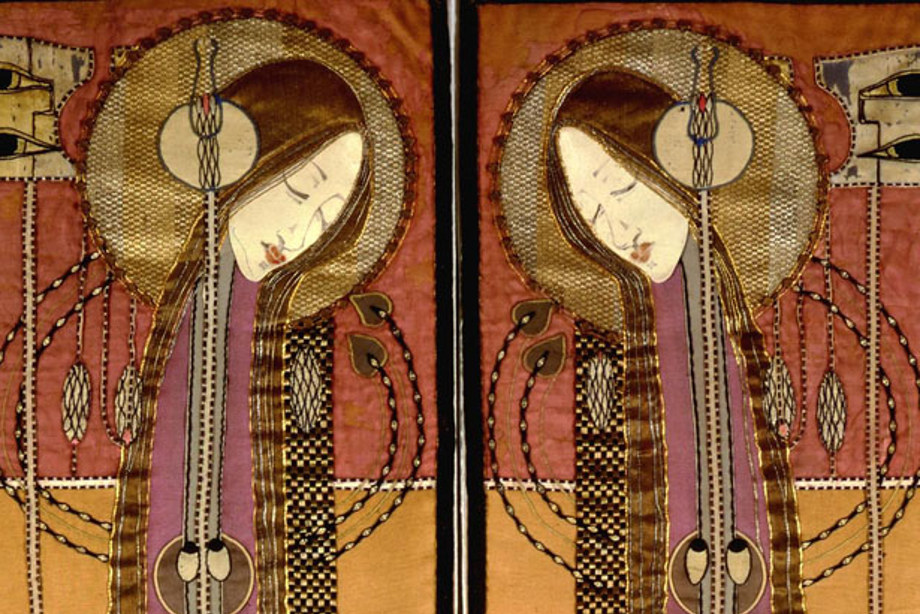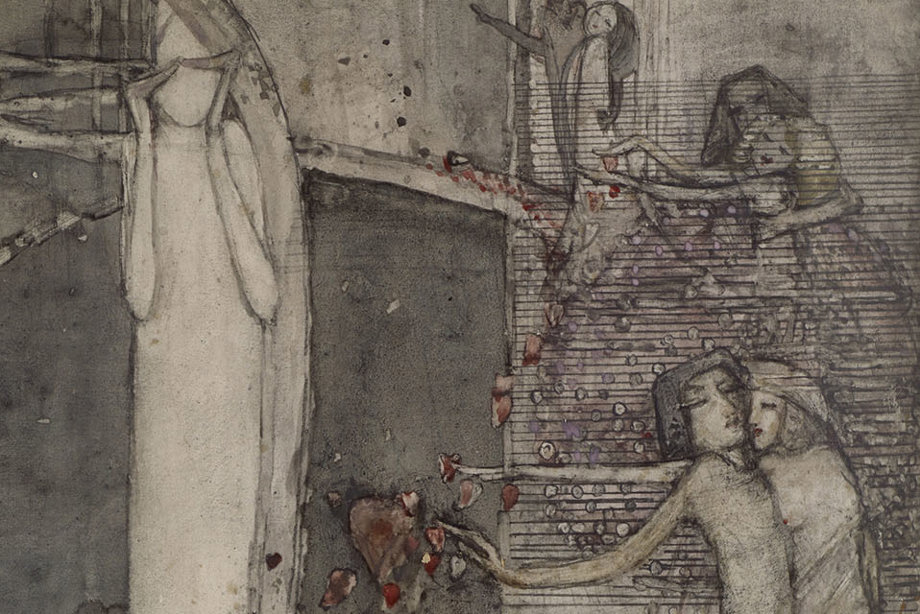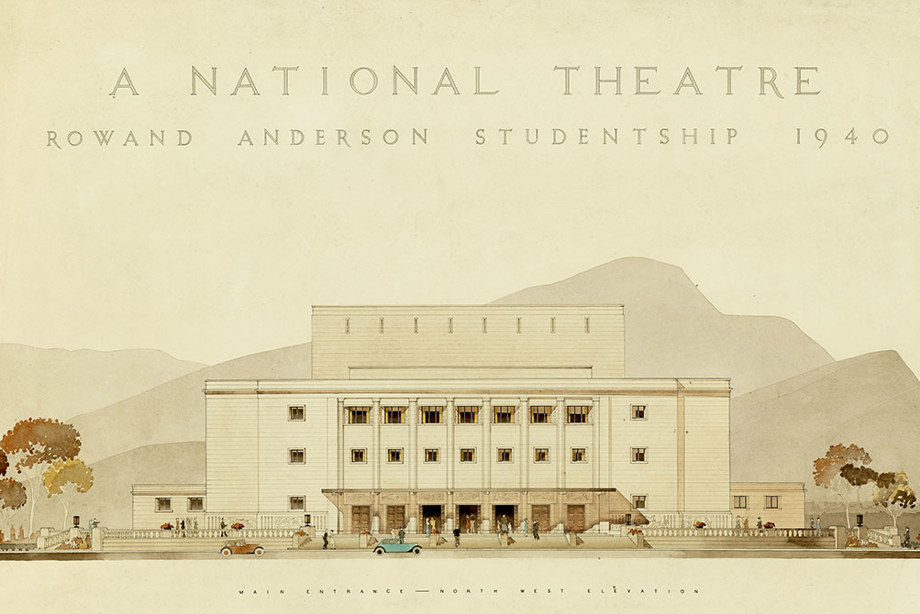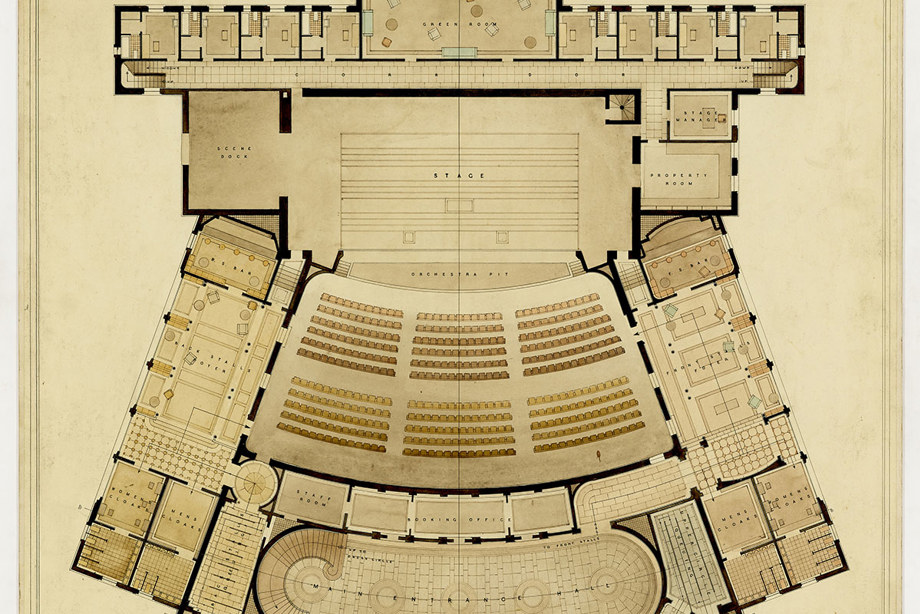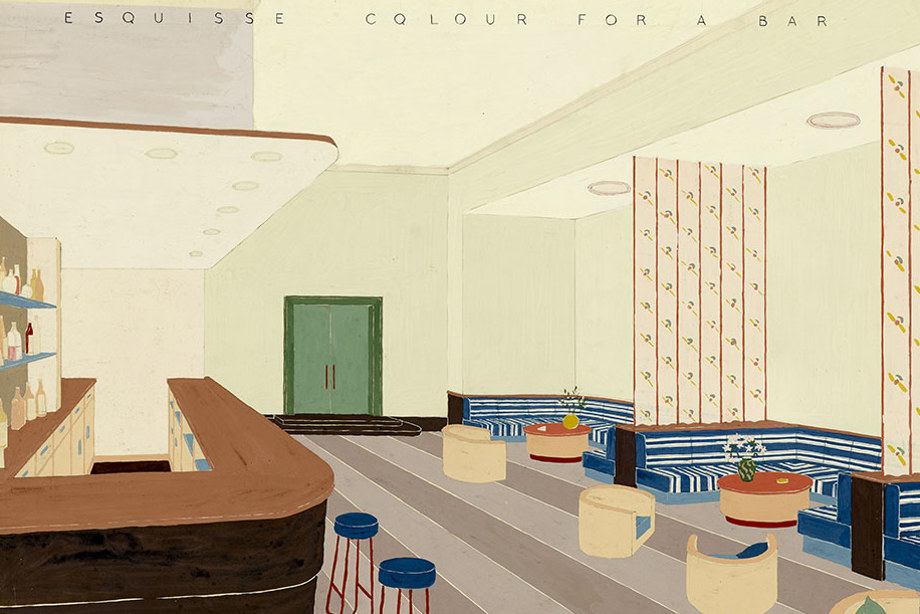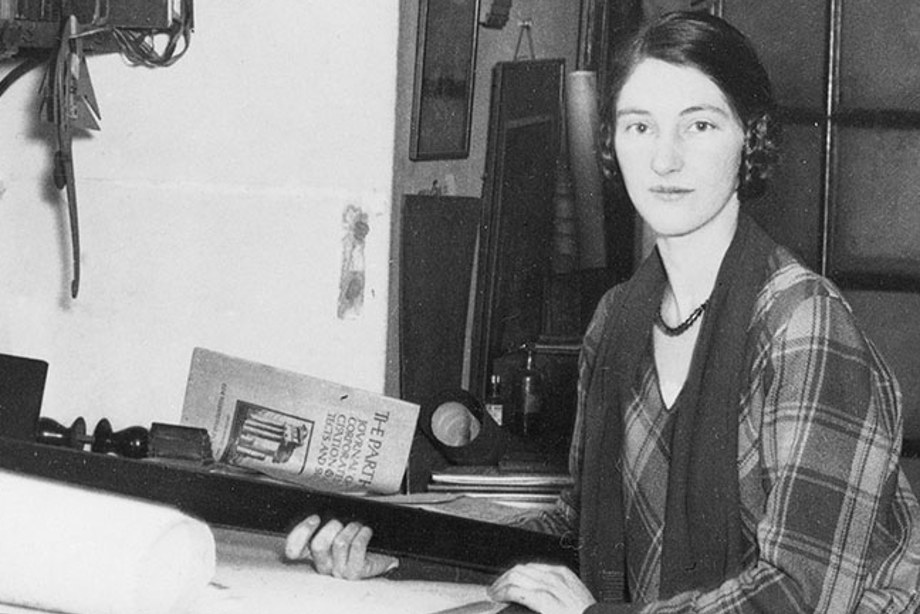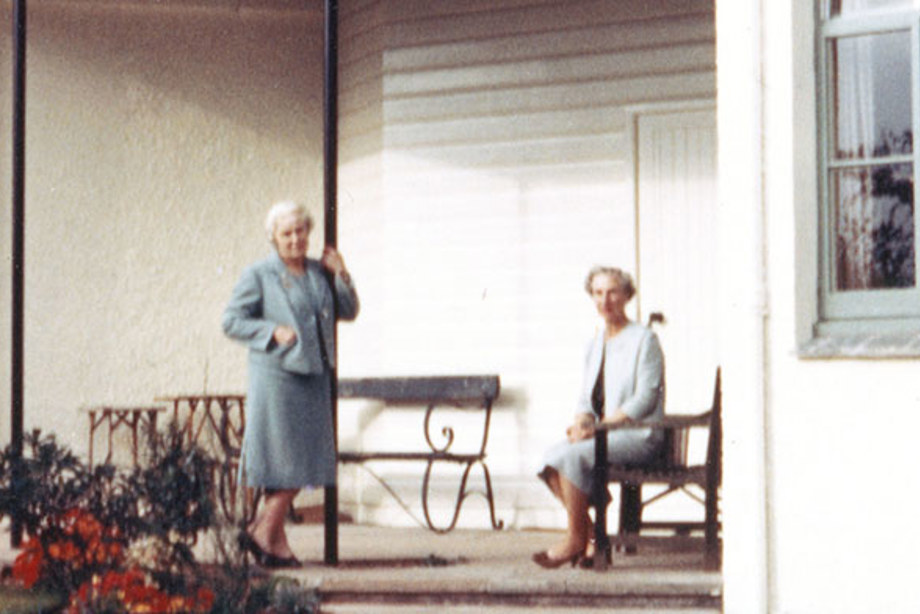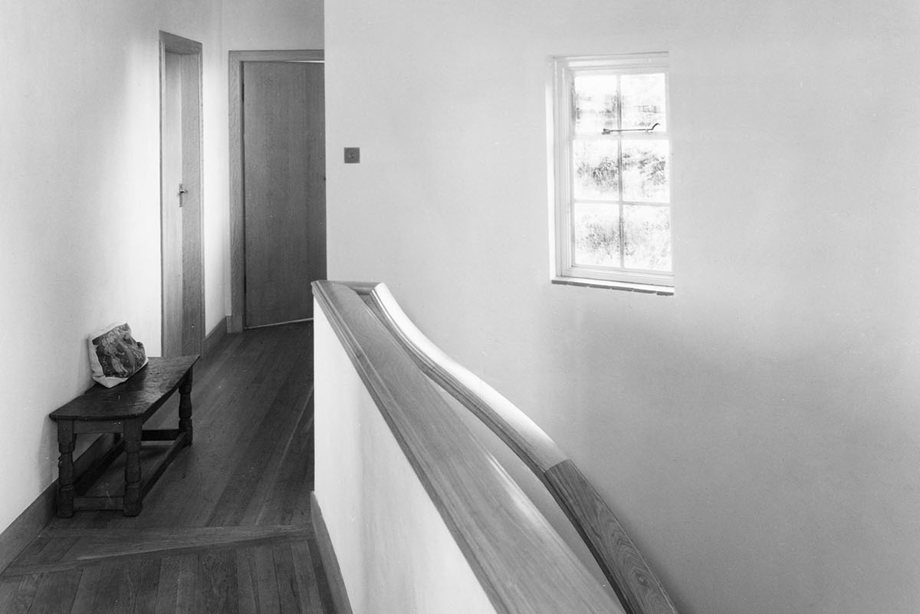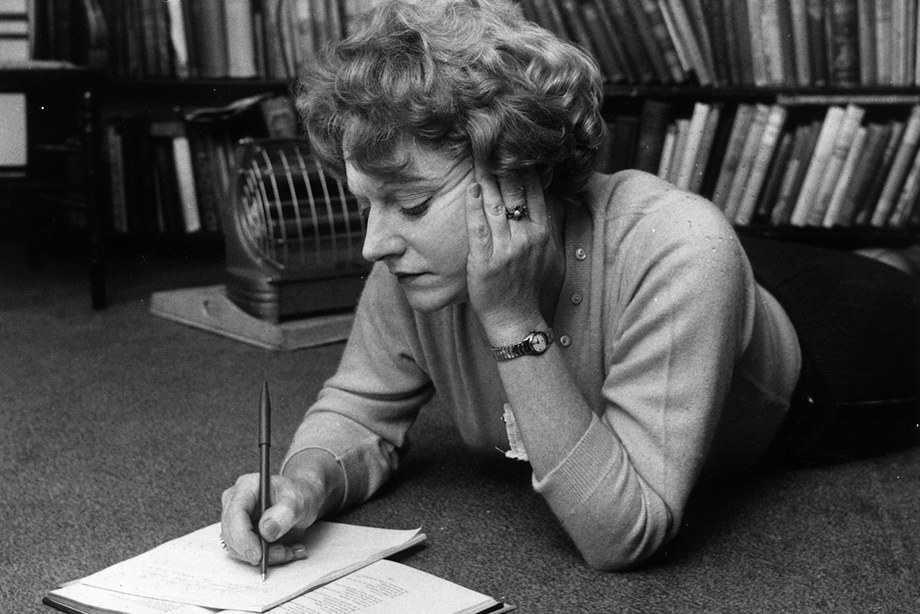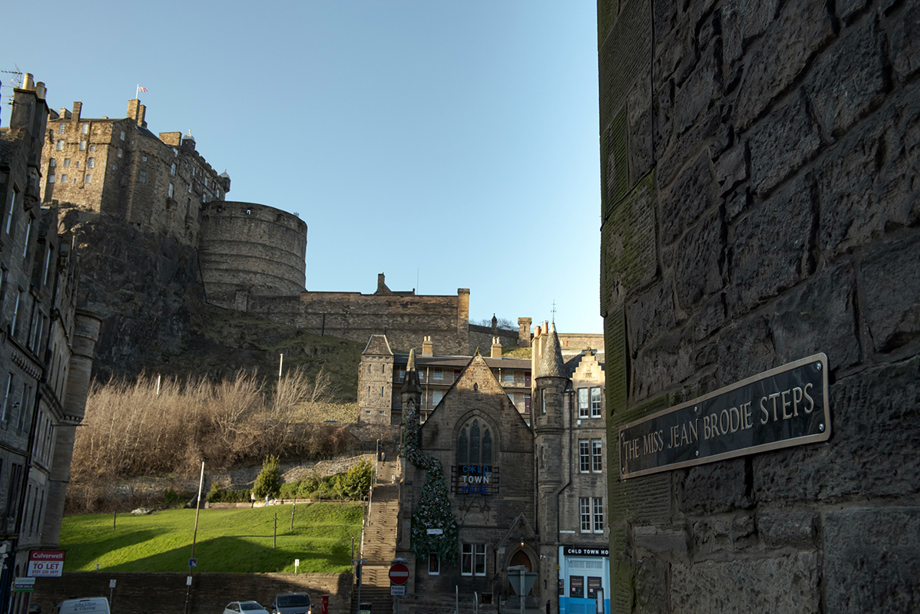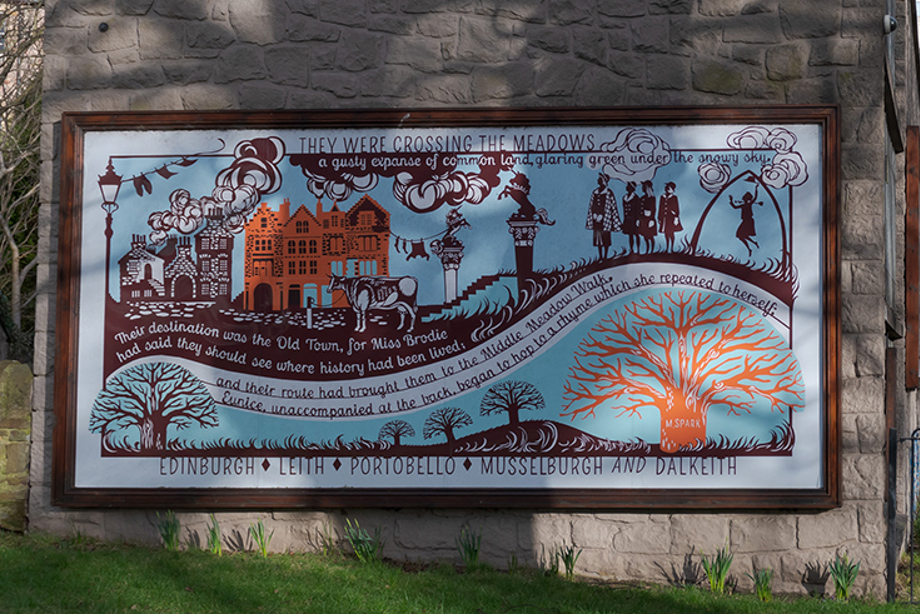Scotland boasts scores of talented and artistic women from painters and sculptors to poets and filmmakers. Many achieved great acclaim and success in their lifetimes, but some had to contend with the difficulties of practicing their art in a field dominated by men.
These women informed and influenced artistic movements. They paved the way in certain mediums. They created beloved characters. They composed songs that are still sung over 300 years later.
Here, we celebrate the lives and works of these bold and creative women.
Phoebe Anna Traquair (1852 – 1936)
Phoebe Anna Traquair was one of the first female artists in Scotland to gain professional recognition.
She was involved heavily in the Arts and Crafts movement and practiced a wide range of disciplines including embroidery, manuscript illumination, enamelwork, furniture decorations, murals, watercolours and easel paintings.
Traquair was born in Ireland and studied art and design at the Royal Dublin Society. She moved to Scotland after marrying the palaeontologist Ramsey Traquair.
She is best known in Scotland for painting the interiors of four Edinburgh buildings between 1885 and 1901. These include the chapels of the Royal Hospital for Sick Children and the Song School of St Mary’s Episcopal Cathedral. Her most acclaimed mural work is in Mansfield Traquair, known as Edinburgh’s ‘Sistine Chapel’.
Professional Recognition
Traquair was held in high regard as an artist in her lifetime. She exhibited her crafts across the world from 1892. Her embroidered panels The Progression of a Soul, were first exhibited in London in 1903 before being shown in St Louis in 1904.
Her work was in demand throughout her life and she received many commissions for the various Arts and Crafts practices she had skill in.
In 1920, Traquair became the first honorary woman member of the Royal Scottish Academy, 20 years after she was first refused.
She died in Edinburgh aged 84 and was buried with her husband under a gravestone of her own design in Colinton Graveyard.
Joan Kathleen Harding Eardley (1921-1963)
Joan Eardley is a renowned artist known for her portrayals of Glasgow life and the Scottish coastal landscape.
She was born in Sussex in 1921 but moved with her family to Glasgow and began studying at the Glasgow School of Art in 1940. She continued with postgraduate study at Hospitalfield House’s Art School in Arbroath and in 1948 won two scholarships. With this she was able to travel and study in France and Italy, taking an interest in the portrayal of ordinary people and their lives.
In the 1950s, Eardley moved back and forth between Glasgow and the fishing village of Catterline in Aberdeenshire. Most of her work depicts the life and energy of these places.
The Paintings of Joan Eardley
Joan Eardley’s work is bold and expressive. Her paintings of Townhead in Glasgow depict local children in tenement streets and often in rundown environments. She also included real-life scraps in her work like the wrappers of sweets and cigarettes.
Her style of combining found items with her paint to add texture carried over into her Catterline landscapes, where she would include things like grasses and flowers. She was also known to paint outside in the elements, even during storms and wild weather.
Eardley was diagnosed with cancer and died in 1963 at the age of 42. Her ashes were scattered on the Catterline coast and a commemorative plaque can be found in the village.
She remains one of Scotland’s most popular 20th century artists.
Màiri NicLeòid, Nighean Alasdair Ruaidh (Mary MacLeod) (circa 1615 - circa 1707)
Màiri NicLeòid, or Mary MacLeod, was a 17th century Gaelic poet and composer. She faced opposition in her lifetime due to her practice of song writing.
NicLeòid began composing while working as a nurse for the MacLeod Chief of Dunvegan in Skye but she was exiled to the Isle of Scarba because of her art. It is believed that the Chief banished her when she wrote a song that praised one of his relatives too highly. She was eventually allowed to return but on the condition that she stop writing songs.
However, NicLeòid continued to compose. Traditionally, praising the lives and adventures of important public figures was work reserved for male poets, but this did not stop NicLeòid writing such songs.
The Songs of Màiri NicLeòid
Sadly, not many of NicLeòid songs and poems survive. Those that do reflect the modern style that was developing at the time, with more localised Scottish Gaelic dialect being used.
For the most part, her songs praise members of the MacLeod family or lament their dead. Her song Luinneag MhicLeòid (MacLeod’s Lilt) was written about her time spent in exile.
NicLeòid is buried in St Clement’s Church in Rodel, Harris, the village where she was born. She is thought to have been buried face down in the south transept of the church.
Dorothy Johnstone (1892-1980)
Dorothy Johnstone was a prolific Edinburgh born artist of portraits and landscapes.
She began her studies at the Edinburgh College of Art (ECA) when she was 16. She would later return and teach there but was forced to give up this position when she married the artist David Sutherland in 1924. Married women were given less freedom to take on employment in the early 20th century.
Johnstone was part of a group of artists known as the Edinburgh Group, mostly graduates of the ECA. They took inspiration from each other’s work and style and Johnstone’s paintings include portraits of her fellow artists.
She was made an Associate of the Royal Scottish Academy in 1962, 50 years after she had first shown work there.
Dorothy Johnstone and Vera Holme
Johnstone first visited Kirkcudbright in 1915 but returned regularly to paint with other artists. She is thought to have had an affair there with Vera Holme.
Vera ‘Jack’ Holme was an actress and militant suffragist born in Lancashire in 1881. In 1909, she became chauffer to the Pankhursts.
Holme was sent to Serbia in 1915 with the transport wing of the Scottish Women’s Hospital Unit. Later, she became the administrator of an orphanage for Serbian children set up by her long-term partner, Lady Evelina Haverfield.
Holme stayed with Johnstone in Kirkcudbright between 1918 and 1919. She died in Glasgow in 1969.
Johnstone made many return visits to Kirkcudbright in her later years. She was still painting and exhibiting work until the age of 70.
Alice Meredith Williams (1877 – 1934)
Alice Meredith Williams was a talented artist who worked in a wide range of disciplines including decorative painting and illustration as well as sculpting and designing stained glass windows.
In 1906, she married the artist Morris Williams and moved to Edinburgh where she focused on producing stained glass window designs for firms in Glasgow and London.
After the war, William’s work was primarily sculptures and memorials. She and her husband collaborated on many projects and supported each other in life and work.
The work of Alice Meredith Williams
Alice Meredith Williams is best known in Scotland for her work on the National War Memorial at Edinburgh Castle. She developed 12 pieces for this, working alongside her husband.
Her work includes a memorial that commemorates the roles played by women during the war. She also worked on the bronze frieze that surrounds the shrine containing the First World War’s Rolls of Honour. This frieze spans over five walls and depicts processions of soldiers, based on drawings by her husband, Morris.
William’s sculptural work also includes The Paisley War Memorial and a memorial for Queenstown in South Africa.
She moved to South Tawton, a village in England, and died in 1934.
Margaret (1864-1933) and Frances MacDonald (1873-1921)
Growing up in Glasgow, The MacDonald sisters had unique artistic style.
They were part of the Arts and Crafts movement, prizing traditional, hand-crafted skills like embroidery and woodwork over mass manufacturing and industrialisation.
Margaret MacDonald’s work is best known in the context of her husband Charles Rennie Mackintosh, she was also an important artist in her own right. MacDonald exhibited her work internationally. One of her specialities was working with gesso, a white paint used to prepare surfaces for painting.
Elongated figures form part of her distinctive style and can be seen in her embroidered hangings designed for the Hill House in Helensburgh.
The MacDonald Sisters and the Glasgow Style
Frances MacDonald collaborated with her sister and they opened a studio together. Her style was considered controversial at the time for featuring sexual imagery and androgenous female forms.
The MacDonald sisters, along with their husbands Charles Rennie Mackintosh and Herbert MacNair, are primarily credited with developing the ‘Glasgow Style’, referencing their time studying at Glasgow School of Art (GSA). But many women from the GSA contributed to this definitive, artistic style.
Sadly much of Frances MacDonald’s art was destroyed by her husband after her death.
Jean Payton-Reid (1917 – unknown)
Jean Payton-Reid was Scotland’s first woman Planning Officer. However, not much is known about her life.
Payton-Reid was born in 1917 and lived and worked in Edinburgh until at least 1970. She trained as an architect, creating beautiful (but unbuilt) artistic works in student designs that ranged from private houses to holiday camps for children and even a dam.
In 1940, Payton-Reid competed for the Rowand Anderson Scholarship, a prominent competition for architecture students. She was the only female competitor and won a £20 prize which is around £300 in today’s money.
Despite her obvious talent, she did not go into an architectural career, instead working in the planning sector with Dumfries County Council. Her career paved the way for other women in Scotland’s planning system.
"I don’t think Dumfries County Council will regret entrusting this important work to a young lady. Miss Reid has a definite grip on things... she possess a natural love of beauty, and Dumfriesshire seems safe from any flagrant breach of its fine tradition."
Kathleen Veitch (1907 – 1968)
Kathleen Anne Veitch was one of Scotland’s first female architects, however very little has been recorded about her contribution to Scottish architecture.
In 1930, Veitch was admitted as an Associate of the Royal Institute of British Architects. In the same year she was listed as a winner of the annual architectural and studentship awards – one of only two women named.
For a time, her career was split between London and Scotland. Veitch had a strong connection to the Borders, where she was employed by the Duke of Roxburgh to make modifications to his estate and was an active member of the community.
She lived with her sister in Melrose in an Arts and Crafts house that she designed, Little Salt Hall, now a C-listed building.
Sadly, the full circumstances of her death remain unknown.
"The winning of this prize means that I get a certificate and £100. I am expected to travel abroad for not less than two months, and to bring back some drawings, sketches and a memoir. I think I shall go to Spain."
Muriel Spark (1918 – 2006)
Muriel Spark was a novelist, poet and essayist with a long and successful writing career that included 22 novels.
Born Muriel Camberg to a Jewish family in Bruntsfield Place, Edinburgh, Spark attended the nearby James Gillespie’s High School for Girls. Her poetry was first published in the school’s magazine. Spark’s experience there would eventually provide inspiration for her well-known novel The Prime of Miss Jean Brodie.
Spark travelled widely throughout her life, living in Southern Rhodesia, London, New York and Italy.
In London, she worked for the British Foreign Office in 1944 producing wartime propaganda before becoming editor of the Poetry Review. It was also in London that she converted to Catholicism, an experience which inspired the material for her first novel, The Comforters, published in 1957.
The Writings of Muriel Spark
Muriel Spark is known for the sharpness and wit of her writing as well as her experimental approach to narrative conventions.
She has many awards and accolades to her name including eight honorary doctorates and winner of the James Tait Black Memorial prize. She was also named a Dame Commander of the British Empire for services to literature in 1993.
Her legacy is celebrated in various locations in Edinburgh today. In the Meadows park, a mural depicts an extract from her novel, The Prime of Miss Jean Brodie, and the Vennel Steps near the Grassmarket are also named after her acclaimed work.
Spark eventually settled in Tuscany. She lived and wrote there until her death in 2006.
The Women of Scotland continued
Discover more of the unsung heroines and well-known women in Scotland's past.

